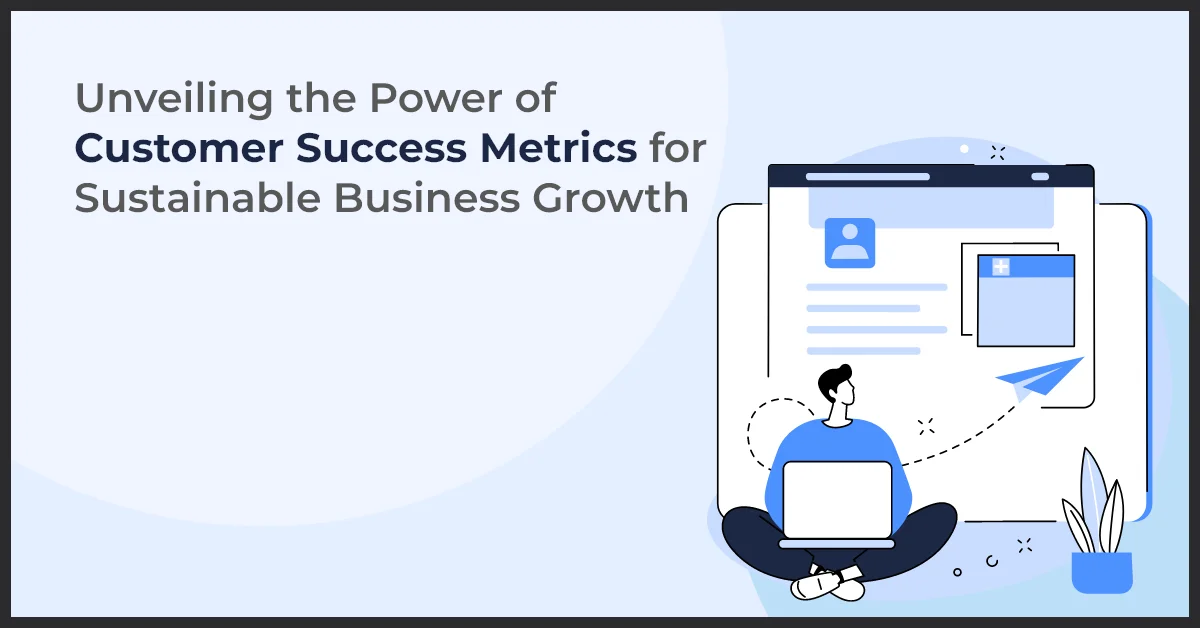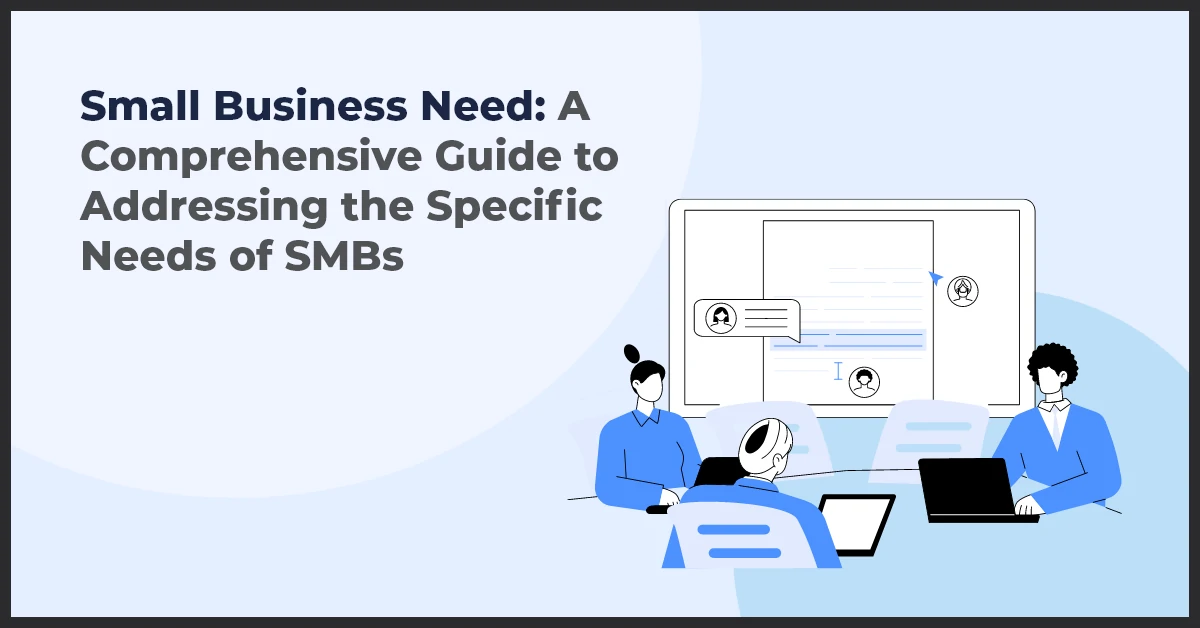Unveiling the Power of Customer Success Metrics for Sustainable Business Growth

Published on: May 23, 2023
Updated on: June 28, 2024
743 Views
- Business
6 min read
Creating a thriving business is about acquiring new customers and ensuring their long-term satisfaction and unwavering loyalty. To achieve this, understanding and leveraging customer success metrics are vital.
Customer success metrics serve as the compass guiding your customer success efforts, enabling you to measure, evaluate, and optimize the effectiveness of your strategies. This blog post will delve into the details of essential customer success metrics that hold the key to sustainable business growth.
By diligently tracking these metrics, you will gain profound insights into your customers' satisfaction levels, engagement rates, and overall experience via customer success metrics dashboards that empower you to make data-driven decisions that improve customer success.
Without further ado, let’s dive into the most critical metrics.
1. Customer Satisfaction Score (CSAT)
The Customer Satisfaction Score (CSAT) is one of the most widely recognized customer experience success metrics for gauging customer satisfaction. By periodically surveying your customers and inviting them to rate their experience with your product or service, you can unravel the intricacies of their satisfaction and identify areas that need enhancement. CSAT surveys commonly employ customer performance metrics rating scales, such as the popular 1-5 scale, allowing you to measure customer satisfaction levels precisely.
2. Net Promoter Score (NPS)
Embedded within the top customer success metrics, the Net Promoter Score (NPS) is an essential indicator of customer loyalty and brand advocacy. By posing a simple yet impactful question, such as "On a scale of 0-10, how likely are you to recommend our company to a friend or colleague?", you can categorize customers into promoters, passives, or detractors.
Promoters, who express high satisfaction, are more inclined to spread positive word-of-mouth, while detractors, who signify dissatisfaction, can potentially harm your brand reputation. Continuously monitoring NPS empowers you to assess customer loyalty, identify brand advocates, and address concerns.
3. Customer Retention Rate
The Customer Retention Rate signifies the percentage of customers who remain steadfast in utilizing your product or service over a specified period. Calculated by dividing the number of customers at the end of a given period by the number of customers at the beginning, this metric offers invaluable insights into the efficacy of your customer success endeavors.
A high customer retention rate is a testament to satisfied customers who perceive ongoing value in your offerings, ultimately fostering recurring revenue streams and fortifying long-term business success.
4. Churn Rate
As the counterbalance to customer retention, the Churn Rate is a key metric measuring the percentage of customers who have discontinued using your product or service within a designated timeframe.
By comprehending the reasons behind customer churn, you can pinpoint pain points, refine your offerings, and proactively implement measures to minimize customer attrition.
Tracking the churn rate empowers you to evaluate the overall health of your customer base, thus enabling you to address critical areas that require attention to ensure enduring customer success.
5. Time to First Value
The Time to First Value metric illuminates the duration it takes customers to experience the initial value derived from your product or service. You can significantly enhance customer satisfaction and bolster long-term retention rates by expediting the onboarding process and facilitating the swift attainment of meaningful outcomes.
Vigilantly monitoring this metric empowers you to optimize onboarding procedures, identify potential bottlenecks, and fine-tune your customer success strategy for enhanced effectiveness.
6. Upsell/Cross-Sell Revenue
Seizing opportunities for upselling and cross-selling to existing customers can profoundly impact your business growth trajectory. By diligently tracking the revenue generated through upsells and cross-sells, you gain valuable insights into the success of your customer expansion initiatives. Offering supplementary products or services that align with customers' needs and preferences
7. Customer Lifetime Value (CLTV)
Customer Lifetime Value (CLTV) measures the total revenue a customer generates throughout their entire relationship with your business. By understanding the value individual customers bring over time, you can allocate resources effectively and focus on cultivating long-term relationships with high-value customers.
CLTV helps you identify the most profitable customer segments and tailor your customer success efforts accordingly.
8. Adoption Rate
The Adoption Rate metric assesses the speed and extent to which customers embrace and integrate your product or service into their daily operations. Tracking the adoption rate allows you to gauge how effectively customers utilize and derive value from your offering.
By identifying adoption bottlenecks, you can devise targeted strategies to drive higher adoption rates and ensure customers realize the full potential of your solution.
9. Customer Effort Score (CES)
The Customer Effort Score (CES) measures the ease with which customers can accomplish their goals when engaging with your company. By asking customers to rate the effort required to resolve issues, make purchases, or access support, you can uncover areas where you can streamline processes and reduce friction. A lower CES score indicates a seamless customer experience, enhancing satisfaction and loyalty.
10. Upsell/Cross-sell Conversion Rate
The Upsell/Cross-sell Conversion Rate metric tracks the percentage of customers who successfully upgrade or purchase additional products or services after the initial sale. A high conversion rate signifies the effectiveness of your upselling and cross-selling strategies, resulting in increased revenue per customer.
You can refine your upselling techniques by analyzing conversion rates and tailoring offers to meet customer needs.
11. Customer Engagement Rate
Customer Engagement Rate measures customer interaction and active involvement with your brand. It includes metrics such as the frequency of product usage, customer interactions with support or marketing materials, and participation in community forums or events.
A high engagement rate indicates strong customer loyalty and a deeper connection with your brand. By fostering engagement, you can build stronger relationships and increase customer satisfaction.
12. Support Resolution Time
It measures the average time to address and resolve customer inquiries or issues. Prompt and efficient support is crucial for customer satisfaction and retention.
You demonstrate your commitment to delivering exceptional customer service by reducing resolution time. Tracking this metric helps you identify areas where support processes can be streamlined, and customer frustrations minimized.
Final Thoughts
Implementing and monitoring these essential customer success metrics can empower your business to drive sustainable growth. By consistently measuring and analyzing customer satisfaction, loyalty, retention, and revenue, you can get the entire picture of your business in customer success metrics dashboards. As a result, you can make informed decisions to optimize your customer success strategies.
Remember, the key to long-term success lies in nurturing your customers, delivering value, and constantly adapting to their evolving needs.Want to streamline your marketing automation activities with the right metrics in place? Get in touch with our experts today. Email us at info@growthnatives.com or call .



